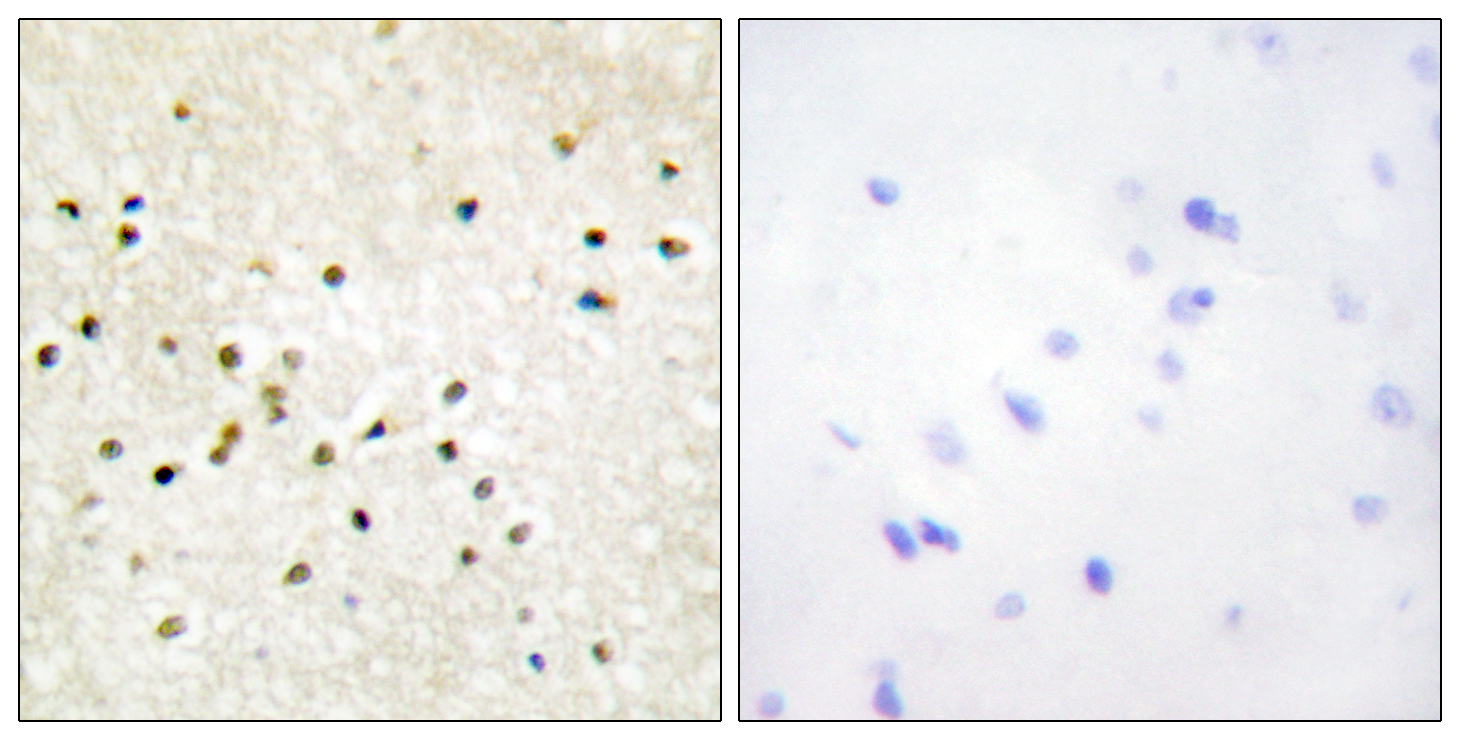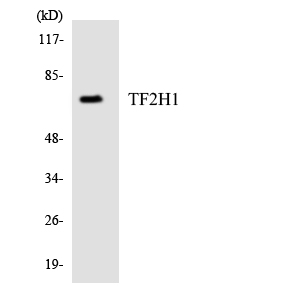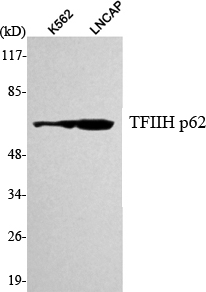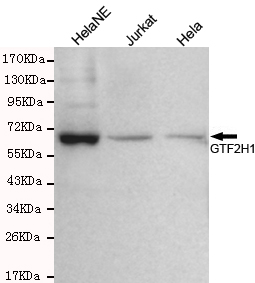TFIIH p62 Polyclonal Antibody
- 货号:YT4618
- 应用:WB;IHC;IF;ELISA
- 种属:Human;Mouse
- 简介:
- >>Basal transcription factors;>>Nucleotide excision repair;>>Viral carcinogenesis
- 蛋白名称:
- General transcription factor IIH subunit 1
- 免疫原:
- The antiserum was produced against synthesized peptide derived from human TF2H1. AA range:15-64
- 特异性:
- TFIIH p62 Polyclonal Antibody detects endogenous levels of TFIIH p62 protein.
- 组成:
- Liquid in PBS containing 50% glycerol, 0.5% BSA and 0.02% sodium azide.
- 来源:
- Polyclonal, Rabbit,IgG
- 稀释:
- WB 1:500 - 1:2000. IHC 1:100 - 1:300. ELISA: 1:20000.. IF 1:50-200
- 纯化工艺:
- The antibody was affinity-purified from rabbit antiserum by affinity-chromatography using epitope-specific immunogen.
- 储存:
- -15°C to -25°C/1 year(Do not lower than -25°C)
- 其他名称:
- GTF2H1;BTF2;General transcription factor IIH subunit 1;Basic transcription factor 2 62 kDa subunit;BTF2 p62;General transcription factor IIH polypeptide 1;TFIIH basal transcription factor complex p62 subunit
- 背景:
- function:Component of the core-TFIIH basal transcription factor involved in nucleotide excision repair (NER) of DNA and, when complexed to CAK, in RNA transcription by RNA polymerase II.,PTM:Phosphorylated.,similarity:Contains 2 BSD domains.,subunit:One of the six subunits forming the core-TFIIH basal transcription factor. Interacts with PUF60.,
- 功能:
- function:Component of the core-TFIIH basal transcription factor involved in nucleotide excision repair (NER) of DNA and, when complexed to CAK, in RNA transcription by RNA polymerase II.,PTM:Phosphorylated.,similarity:Contains 2 BSD domains.,subunit:One of the six subunits forming the core-TFIIH basal transcription factor. Interacts with PUF60.,

- Immunohistochemistry analysis of paraffin-embedded human brain tissue, using TF2H1 Antibody. The picture on the right is blocked with the synthesized peptide.

- Western blot analysis of lysates from Jurkat cells, using TF2H1 Antibody. The lane on the right is blocked with the synthesized peptide.

- Western blot analysis of the lysates from HepG2 cells using TF2H1 antibody.





